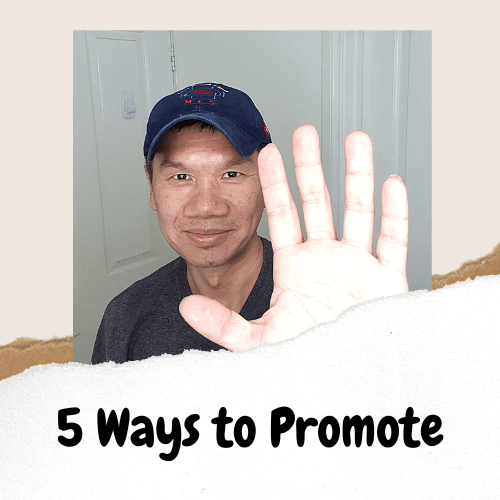How to Do Affiliate Marketing Without Social Media?
Are you interested in making money online through affiliate marketing, but hesitant to dive into the world of social media?
You’re not alone. While social media can provide a vast potential audience, it also comes with its own set of challenges and drawbacks. And not every affiliate marketer wants to be a social media influencer.
In this blog post, we will explore the possibilities and benefits of doing affiliate marketing without relying on social platforms.
So let’s dive in and discover how you can successfully achieve your affiliate marketing goals without getting tangled up in the time-consuming intricacies of building a following on various social channels.
Key Takeaways
- Social media offers a wide reach and engagement. However, your reach is limited to the unpredictable nature of the algorithms, which can negatively impact sales. The harder part. If you want free traffic on social media, you need to be visibly out there to build a following. To avoid these challenges, effective alternative strategies include promoting via a blog or website, paid traffic campaigns, email marketing, and collaborations.
- Selecting the right niche and products to promote is crucial. It’s best to concentrate on specialized segments with high demands but low competition. By doing this and creating high-quality content that adds genuine value to your audience, marketers (like you) can boost sales more efficiently without solely relying on social media following. Building trust among the audience is crucial.
- Diversifying your affiliate marketing strategy using other channels like email lists or blogs helps reduce the risk of losing access to your audience overnight. Because platforms can come and go or change their policies … and algorithms.
Can You Do Affiliate Marketing Without Social Media Following in 2024?
This page have some affiliate links. In other words, if you buy from my links, I may get a commission. And some of the images were sources from Unsplash+.
Yes, you can do affiliate marketing without followers.
While having a large social media following or email list can make it easier to generate leads and sales, there are other ways to promote affiliate links.
One effective method is content creation, which involves blogging or publishing articles that provide value to your target audience. Then you SEO it to get it on the Google SERPs.
And then there is paid advertising. This is another way to drive traffic to your affiliate links without relying on social media or an existing following.
Platforms like Google Ads allow for targeted ads that reach potential customers based on their interests and search behavior.
And then there’s guest blogging. This requires reaching out to fellow bloggers in your niche and then providing the most helpful content for their readers.
You could even hang out where your audience is hanging out.
From niche forums, Facebook groups, Quora, Medium, and the likes, you can join, answer pressing questions and build your trust factor with the readers.
(Don’t worry. If this sounds all too confusing, we’ll cover it all later.)
No matter what strategy you choose, the key is to focus on providing value and building trust with your audience by promoting products that align with their needs and interests.
Then you start getting coverage for your affiliate marketing blog using key traffic-generating strategies. (An essential aspect of successful affiliate marketing.)
Pros And Cons Of Social Media For Affiliate Marketing
Social media offers a wider reach and higher engagement for affiliate marketing, but it also comes with platform dependency and algorithm changes that can negatively impact sales.
Pros: Wider Reach And Engagement
Utilizing social media for affiliate marketing offers the undeniable advantage of wider reach and increased engagement.
Social platforms such as Facebook, Instagram, Twitter, Pinterest, and LinkedIn have billions of users combined, making them an ideal space to share your affiliate links with a diverse audience.
Moreover, social media encourages interaction between users through likes, comments, shares, or retweets which significantly increases the visibility of your affiliate content beyond your immediate network.
Suppose a user interacts with your post promoting an e-book on digital marketing strategies by using smart hashtags or captivating visuals related to the topic.
In that case, other users who are interested in the same topic might stumble upon it in their feed, which could lead to increased exposure and potential sales.
Cons: Platform Dependency And Algorithm Changes
One significant drawback of relying solely on social media for affiliate marketing is the platform dependency and algorithm changes that can affect your marketing efforts.
Social media algorithms have a reputation for being fickle and constantly changing, which can make it challenging to keep up with what’s working and what isn’t.
And here’s the thing about promoting content through social media.
It has a short content lifespan before it gets lost in the feed.
Moreover, if you’re just relying on building a social media following then you’re exposed to the risk that the platform might disappear (think MySpace) or be exposed to crazy policy changes.
Without control over the platform, you run the high risk of losing access to your audience overnight.
5 Effective Ways To Do Affiliate Marketing Without Social Media Following
But first. There are many ways to promote affiliate marketing without using social media, but I recommend focusing on these top 5 methods as they will provide a solid foundation for starting your solopreneur journey.
Now, let’s see how to do affiliate marketing without social media.
1. SEO Your Blog Or Website
One effective way to do affiliate marketing without social media is by promoting through a blog or website.
And the most obvious way to attract visitors to your blog is to publish new content that is optimized for search engines. Regularly.
As you can see, there are two components to this. Writing content and SEO.
Let’s begin with the first component.
Blogging
To get the results you want with affiliate marketing, you just have to be consistent with your blogging.
If it isn’t, you’re just wasting your time. And time is money. Right?
Now, the beauty of blogging. It gives you the platform to create high-quality content that resonates with your audience.
Which in turn helps establish you as an authority in your niche and as well, drive traffic to your affiliate links.
By skipping the need to be a social media influencer, you can focus on delivering the best content you can muster and give your readers what they need most. A solution.
In case you’re looking for blogging ideas, here are a few content suggestions for your affiliate marketing blog.
- How-to guides. Match this search intent by providing steps to accomplish a certain goal (like how to do affiliate marketing without social media).
- A round-up of products or services. Here you can grab a handful (or more than a handful) of products. Then compare them, rate them, list out the pros and cons, and a takeaway. (like best web hosting for affiliate marketing)
- Product or service reviews. This content format is a deep dive into the product by providing helpful insights by listing out the pros and cons, benefits and features of the product. (like Bluehost review)
With the first component covered, let’s move on to the next important part.
Optimizing Your Blog
To get started, it’s important to choose a niche and conduct keyword research.
Keyword research is a constant effort. It never stops. It’s research that will help you find keywords that are less competitive and have decent search demand.
You can use free keyword tools like Google keyword planner and even Ahrefs to kickstart your research.
This will guide you on what topics to focus on when creating content for your site and your readers.
You can then research and join affiliate programs relevant to your niche.
And when you have, you can then develop a content marketing strategy focused on creating helpful content that promotes the products or services available through those programs.
But be sure your content meets the search intent of the user.
With that said. Here’s a quick overview of the top practices for SEO blogging.
This includes adding keywords (and LSI) into your content sensibly, meta title, meta description, header tags, URL slug, and image files (eg. yourkeyword.jpg).
Fast Loading Website
And importantly, your website must have a good user experience for every visitor. This means, as soon as the visitor lands on your blog or website, it must load fast.
And for a good reason. Google prioritizes speed when it comes to ranking search results, giving fast sites an advantage over sites that take longer to load
It makes sense because if you land on a slow website (really slow), you’ll be put off and move on.
Don’t believe me?
According to research by ThinkWithGoogle, if it takes up to 5 seconds to load, there is a probability of 90% that a visitor leaves the website!
So make your website loading speed count.
And … make it mobile-friendly too. Why?
According to a survey by Google, 74% of people are more likely to revisit a website if it is mobile-friendly.
In other words, if you want visitors to come back for more, make sure you pick a mobile-responsive website theme.
Off-Page SEO
Finally, to give your SEO efforts a bigger push, you have to create backlinks to your website.
And what are backlinks?
Backlinks are links on one website that point to another website, and they are considered votes of confidence by search engines like Google.
Essentially, when a website links to another website, it vouches for the other site and signals to search engines that the content is worth linking to.
Backlinks can improve rankings, boost credibility, help Google find new pages, and send referral traffic to a site.
Therefore, creating backlinks is essential with your off-page SEO effort, and it can positively affect a site’s ranking position or search visibility.
There are various strategies for getting backlinks, such as creating high-quality content, guest blogging, broken link building, and more.
It is important to note that not all backlinks are created equal, and some are considered more valuable than others.
Now circling back.
I like to stress that SEO does take time and patience. a lot of patience.
There’s no shortcut to getting your keywords ranked fast.
Especially, for affiliate-friendly commercial keywords like ‘best hosting for blogs’, ‘Bluehost reviews’, ‘top WordPress plugins’, and so on.
With blogging, you need to.
- Stick to a plan.
- Be consistent.
- And focus on the most helpful content for the readers and optimize it for the search engines.
Paid Traffic Campaigns
Paid traffic campaigns are a reliable way to generate affiliate sales without relying on social media.
By using platforms such as Google Ads or Facebook Ads, you can create targeted advertisements that drive potential customers to your website or landing page. Quickly.
For example. If you’re promoting an online course for beginner photographers, you can use Facebook Ads to display your ad when someone searches for “photography classes” in your area.
The nice part. For as little as $5 a day, you can get your message out to your ideal audience in minutes.
By starting out slowly, it does two things.
It gives you control over your budget.
You can monitor what campaign has worked and what hasn’t. And then scale the good ones.
It’s essential to set clear goals and budgets for paid campaigns, so you don’t overspend on ads that aren’t converting.
Email Marketing
Don’t ignore this. Email marketing is one of the most effective ways to generate leads for affiliate marketing without relying on social media.
With an email list, content marketers can engage with potential customers directly and provide valuable information to build trust and authority.
This makes it easier to promote affiliate products later on and increases conversion rates.
Email marketing software like Moosend and Aweber are great tools to start building a subscriber list.
To start building a list of hungry prospects, you’ll need a lead magnet (checklist, guide webinar, etc) you can give away for free to get a reader to give up their email address.
By consistently delivering relevant content through targeted email campaigns, you can drive traffic back to your website or blog where you have more control over the sales funnel.
Which can lead to higher conversions.
Remember that it’s oh-so essential to focus on creating engaging content that provides value rather than just pushing products in every email.
Guest Blogging And Collaboration
Not only that, you get to form new friendships with fellow bloggers and influencers.
However, like SEO, it is a hustle.
Because there will be plenty of cold email outreach, following up, and relationship building.
But that’s fine if you’re in it for the long haul.
The key here is not to think of every outreach as a benefit for you. Rather an opportunity for you to fill in a content gap for a fellow blogger.
Guest blogging (and any form of content marketing) is about providing value to others.
Join Forums and Groups
You’ve now got your niche. You know where your audience hangs out. Now, if you wish to, is to hang out where they actively participate.
This is an opportunity to show your stuff and help out fellow members who have burning questions to fix.
To find a forum in your niche, do a simple search like “affiliate marketing+ forum”.
(Sidebar – if you have a social media account, you can join groups in your niche and get involved.)
And what about Quora?
Quora is a question-and-answer platform that can offer several benefits to you. Here are some of the benefits of using Quora:
Discovering your brand: Quora can help prospects discover your brand. By answering questions related to your industry or niche, you can establish yourself as an expert and increase brand awareness.
Search engine visibility: Quora posts appear in search engine results. By answering questions related to your business, you can increase your online visibility and attract more traffic to your website.
Learning about your target audience: This is great for research as Quora lets you learn more about your target audience. By following topics and people that interest you, you can gain insights into the questions and concerns of your target audience.
Content ideas: Quora is great for content ideation. By browsing through questions related to your industry or niche, you can come up with ideas for blog posts, videos, or other types of content.
Discovering industry influencers: Quora helps you discover industry influencers and capture their insight. By following experts in your industry, you can gain valuable insights and learn from their experience. And even collaborate.
Data source: Quora can be used as a data source. By analyzing the questions and answers on Quora, you can gain insights into consumer behavior, preferences, and opinions.
I would like to round it out by saying that your focus should be on helping people out and building trust in your brand.
Again, this is about focusing on helping people out to build trust in your brand.
How To Promote Affiliate Links Without Social Media Followers?
Promoting affiliate links without social media can seem like a daunting task, but there are several effective ways to drive traffic and increase conversions.
One recommended method is to start a blog or website focused on your niche and promote your affiliate products through helpful content and product reviews.
When your blog is posted, you then apply one of 5 ways to generate eyeball traffic to it. That is.
-
Optimizing your blog for the search engines.
-
Paid advertising.
-
Email marketing.
-
Guest blogging and collaborations.
-
Get involved in forums, groups and Quora.
6 Steps To Start Affiliate Marketing Without Social Media
To start affiliate marketing without social media, follow these steps:
- Choose a profitable niche.
- Conduct keyword research to find SEO-friendly topics related to your niche.
- Join relevant affiliate programs, and determine which promotion strategy to use (blogging, email marketing, or paid ads).
- Create a WordPress blog with Bluehost for hosting and domain name registration.
- Publish helpful content on your chosen platform and drive traffic using organic search or by leveraging other marketing channels.
Step 1: Choose A Niche
Choosing a niche is the first step in affiliate marketing without social media.
The niche you select should be something that you’re knowledgeable about and have an interest in promoting.
For example, if you’re passionate about health and wellness, then you might choose to promote supplements or exercise equipment.
Another thing to point out. When choosing a niche, it’s important to consider the competition as well. You need to be surveying the affiliate marketing competitors, reverse engineer their websites for SEO ideas, and see what they’re posting and promoting.
As well, researching your potential niches with keyword research tools can help determine how competitive each one might be online and what kind of demand exists for products related to them.
Step 2:Keyword Research
As mentioned previously, one of the key components of any successful affiliate marketing strategy is thorough keyword research.
This involves understanding what your target audience is searching for online and using those keywords to optimize your content.
For example, if you are promoting a fitness product, you might want to focus on specific search terms such as “best home workout equipment” or “how to burn belly fat.”
By incorporating these keywords into your blog posts and other promotional materials, you can increase the chances that potential customers will find and click on your affiliate links.
Step 3: Research And Join Affiliate Programs
To successfully start affiliate marketing without social media, it is essential to research and join the right affiliate programs.
Take time to evaluate each program based on its commission rates, product offerings, and payment terms.
You should also consider joining smaller niche-specific networks for more focused products that suit your audience.
For example, if you run a blog about gardening tools or equipment reviews, finding an affiliate network specific to gardening may be more profitable than choosing Amazon Associates alone.
It’s important to note that some affiliate networks require approval before letting you promote their products.
So be sure to have a website or blog loaded with content aimed at your preferred audience before applying for any affiliate programs.
Step 4: Start A WordPress Blog With Bluehost
Creating a WordPress blog with Bluehost can be an effective way to start affiliate marketing without social media.
Not only is it easy to launch one, it also very cost-effective to start a blog.
With Bluehost’s user-friendly platform, you can set up a website quickly and easily, even if you have little to no technical experience.
You pick a domain name, and a design, upload your logo, install some important plugins, and create some essential pages (About, Privacy Policy, Terms of Use, and Contact).
Once your site is up and running, focus on creating high-quality content that aligns with your niche.
This will help attract organic traffic from search engines like Google and allow you to promote affiliate links seamlessly within your posts.
As well, using Bluehost allows for scalability as there are different packages available based on the size of your website and needs.
One benefit of starting a blog instead of solely relying on social media is that it allows for complete control over the content, design, and monetization strategies utilized.
You want control.
How to Start a WordPress Blog For Affiliate Marketing in 2024
Step 5:Create And Publish Helpful Content.
Creating and publishing quality content is the cornerstone of successful affiliate marketing without social media.
You need to provide your readers with helpful information related to your niche, so they trust you as an authority.
This can come in various forms – a blog post, video tutorial, or even an email newsletter.
The key is to create genuinely useful content that provides value for your audience.
For example, if you’re promoting fitness products, consider writing articles on workout routines or posting videos on healthy eating habits.
To maximize the effectiveness of content creation for your affiliate marketing efforts, remember that SEO plays a crucial role in driving traffic to your web pages.
Identify relevant keywords and optimize content around them to rank higher in search engines such as Google or Bing.
It’s also essential to focus on creating engaging headlines and opening paragraphs that grab people’s attention.
Step 6: Drive Traffic To Your Content
After creating helpful and valuable content to promote your affiliate products, it’s time to drive traffic to that content.
One effective way is through search engine optimization (SEO).
By optimizing your website or blog with relevant keywords, you can improve your ranking on search engines and attract organic traffic.
But. With search engine traffic, it does take time for your blog to get ranked and seen. It’s a long-term game.
However, if you want quick results and you’ve got the budget then paid advertising is the way to go.
With Google Ads, you can generate quicker affiliate sales by placing sponsored ads at the top of search results pages.
(Psss. Social media platforms also offer paid ad options that allow you to target a specific demographic with your content.)
Also, building an email list of interested subscribers is a highly effective way of generating leads for affiliate marketing without social media following.
3 Benefits Of Affiliate Marketing Without Social Media
Flexibility And Control
One significant benefit of doing affiliate marketing without social media is the level of flexibility and control you maintain over your business.
With a blog or website, for instance, you have complete control over the content you create and how it aligns with your brand messaging.
You can also choose which affiliate programs to join and what products to promote on your site.
In contrast, social media platforms may impose restrictions or algorithm changes that affect how visible your content is to followers.
You’re reliant on the platforms to show your content to your followers. Which limits the potential of your reach.
By creating valuable content outside of social media platforms, you can build an audience based on trust and authenticity rather than just likes and shares.
I like to highlight this again. Email lists are independent of any platform.
It enables you to send targeted promotions while maintaining full ownership of your subscribers for future campaigns.
How powerful is that?
Authenticity And Trust-building
One of the major benefits of affiliate marketing without social media is the ability to build authenticity and trust with your audience.
Without relying on flashy social media posts or sponsored content, you can instead focus on creating helpful, valuable content that truly resonates with your readers.
For example, if you are promoting a weight loss product as an affiliate marketer, simply posting about it on social media may not be enough to convince people to buy.
By creating a blog that centers on healthy living tips and sharing personal stories about your weight loss journey can enhance readers’ trust in your product recommendations.
Cost-effective And Scalable
One of the main advantages of affiliate marketing without social media is that it can be a cost-effective and scalable way to make money online.
Unlike paid advertising or social media campaigns, starting a blog or website requires minimal investment upfront.
And my favorite. Affiliate marketing offers endless opportunities for scalability.
As your website grows in popularity, you can add more products from various affiliate programs to promote to your readers.
You can also expand your reach by partnering with other bloggers or influencers in your industry.
How to Do Affiliate Marketing Without Social Media – FAQs
What is affiliate marketing?
Affiliate marketing is a performance-based marketing strategy where individuals or businesses promote products or services on behalf of a company and earn a commission for each successful referral or sale they generate.
Can I do affiliate marketing without using social media platforms?
Yes, it is possible to do affiliate marketing without relying on social media. There are alternative methods and platforms you can utilize to promote products and earn commissions.
What are some effective strategies for affiliate marketing without social media?
Here are five ways to do affiliate marketing without social media:
- Blogging: Create a niche-focused blog and publish valuable content related to the products you want to promote.
- Join Forums and Groups: Participate in online forums and groups that are relevant to your niche. Offer valuable insights and recommendations, and include your affiliate links when appropriate.
- Email Marketing: Build an email list of subscribers interested in your niche and send them valuable content and product recommendations.
- Influencer Collaborations: Partner with influencers or bloggers in your niche who have a loyal following and promote products through them.
- SEO and Content Marketing: Optimize your website or blog for search engines and create high-quality content that attracts organic traffic.
How can I gain control, authenticity, and trust-building opportunities in affiliate marketing?
To gain control, authenticity, and trust-building opportunities in affiliate marketing, focus on providing honest and valuable recommendations. Choose products you genuinely believe in and have personally tested. Building trust with your audience is crucial for long-term success.
Is affiliate marketing without social media cost-effective?
Yes, affiliate marketing without social media can be cost-effective. Many platforms, like blogging or joining forums and groups, require minimal investment to get started. However, it’s important to consider costs related to website hosting, content creation, and any paid marketing strategies you choose to employ.
Conclusion: Is Affiliate Marketing Without Social Media Right For You?
Affiliate marketing without social media can be a viable option for those who hate it and want to avoid platform dependency and algorithm changes, have more control over their content, and build authentic relationships with their audience.
However, it requires a strategic approach and dedication to creating valuable content for your niche market, as well as an understanding of SEO and other traffic-driving strategies.
Pros And Cons To Weigh
When deciding whether or not to use social media for affiliate marketing, it’s important to weigh the pros and cons.
On one hand, social media can be a valuable source of traffic thanks to its wide reach and engagement capabilities.
However, social media also has drawbacks such as platform dependency and algorithm changes.
You’re at the mercy of these platforms’ policies and algorithms which can change overnight without warning. Yikes.
This means your content may suddenly become less visible or disappear altogether.
Overall, while there are benefits to using social media for affiliate marketing purposes, it’s important to consider alternative methods as well in case of any potential changes or disruptions on these third-party platforms.
Other Ways To Drive Traffic And Promote Products.
In addition to the strategies mentioned above, there are other effective ways to promote affiliate links and drive traffic without relying on social media.
One great option is through blogging. You can blog about product reviews, comparisons, and how-to guides.
Another option is through guest posting on relevant blogs or websites within your niche.
This allows you to reach a wider audience and build backlinks to your own website or blog, which can improve your search engine rankings over time.
Ultimately, it’s important to remember that while social media may be a popular choice for promoting affiliate marketing products, it’s not the only one.
Disclosure: This post may contain affiliate links, which means I’ll receive a commission if you purchase through my links, at no extra cost to you. Please read full disclosure for more information.
You Might Want to Check This Out Too
Resources To Grow Your Business With
Bluehost is a great starting point for beginners or bloggers who want to switch to a reliable web hosting service. And it gives you the best bang for your buck – starting at $2.95 a month*.
With the entry-level hosting plan, you’ll get a free domain name for one year, free SSL, free CDN, reliable customer support, and 30 day money back guarantee.
You can sign up with Bluehost here.
WPX Hosting
It’s a web-hosting service I love using. It specializes in WordPress hosting, and depending on what package you opt for, you can host 5 or more sites on one account. The best bit is – the quick turnaround in support is top notch.
For bloggers who have an established blog, this is a fantastic option.
You can learn more about this service here.
Aweber
Building an email list of a growing audience is essential for the longevity of any business. This autoresponder service is easy to use, and it is a great starting point for someone looking to kickstart their email campaign. You can try their free account here.
Hi, I’m Jason Ou (surname aka, Oh). I am a Solopreneur and Blogger. My mission is to help fellow entrepreneurs (like you) to profit from their passion online. Let’s connect on Facebook now.








